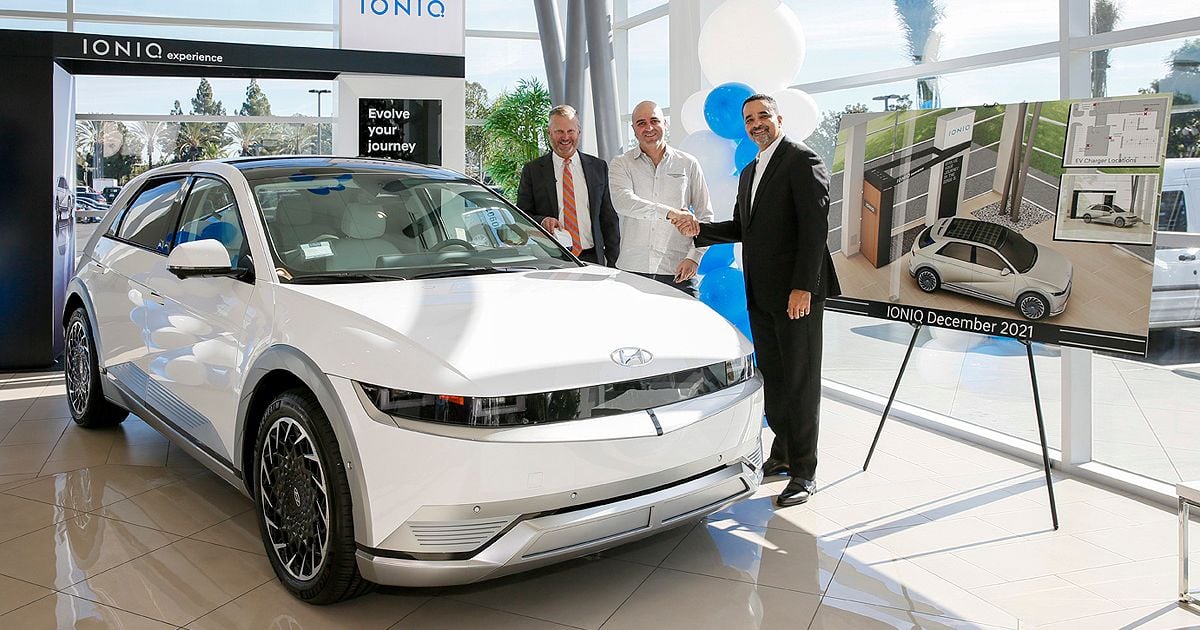
Tesla Inc. CEO Elon Musk conceived the automaker’s breakthrough Model 3 sedan as a people’s car, an electric vehicle affordable to the masses. But the EV maker is now giving up market share to rivals undercutting Tesla on price.
With the base Model 3 now starting at nearly $50,000 and the popular Model Y crossover above $65,000, Tesla is losing share to competitors that can deliver under the $50,000 level, S&P Global Mobility said in a report Tuesday.
Those fresh rivals include electric crossovers such as the Ford Mustang Mach-E and Hyundai Ioniq 5. Smaller hatchbacks with several years on the market, such as the Chevrolet Bolt and Nissan Leaf, start below $30,000.
“Tesla’s position is changing as new, more affordable options arrive, offering equal or better technology and production build,” S&P Global said. “Given that consumer choice and consumer interest in EVs are growing, Tesla’s ability to retain a dominant market share will be challenged going forward.”
The EV pioneer is also being pressured at the high end from luxury rivals that have finally embraced electric technology after watching Tesla run off with big chunks of their market share.
“Luxury EVs from Mercedes-Benz, BMW, Audi, Polestar, Lucid, and Rivian — as well as big-ticket items like the Ford F-150 Lightning, GMC Hummer, and Chevrolet Silverado EV [pickups] — will plague Tesla at the high end of the market,” S&P Global said.
Tesla is still the big dog of the U.S. EV market, with a commanding 65 percent market share and the No. 1 spot among luxury brands, regardless of powertrain. But because of Tesla’s price increases over the past two years, it’s positioned itself mostly outside the mainstream, except for the base Model 3, analysts say.
Tesla’s EV market share in the U.S. has fallen from 79 percent in 2020, and it is expected to fall below 20 percent by 2025, S&P Global said.
For years, Tesla critics have been predicting the arrival of EV competition from legacy brands and rival startups — and it is finally here. Notably, the new arrivals are crossovers and pickups that consumers want rather than early-adopter EVs that were smaller and focused on meeting regulatory mandates.
“S&P Global Mobility predicts the number of battery-electric nameplates will grow from 48 at present to 159 by the end of 2025, at a pace faster than Tesla will be able to add factories,” the data firm said. While Musk has teased a lower-priced Tesla for years, “the market launch timing is unclear,” S&P Global said.
Tesla does have a product strategy to defend its market share, including the planned launch of the Cybertruck pickup from its new factory in Texas. Musk has also announced a “robotaxi” that drives autonomously for 2024. And Tesla will deliver its first Semi cargo vehicles on Thursday. But that doesn’t help it with light-vehicle buyers.
“Before you feel too badly for Tesla, however, remember that the brand will continue to see unit sales grow, even as share declines,” said Stephanie Brinley, a senior analyst at S&P Global Mobility. “The EV market in 2022 is a Tesla market, and it will continue to be, so long as its competitors are bound by production capacity.”
As such, S&P Global added: “Tesla today is the brand best equipped for taking advantage of the immediate surge in EV demand, though manufacturing investments from other automakers will erode this advantage sooner than later.”
Other takeaways from the report:
- “Of more than 525,000 EVs registered over the first nine months of 2022, nearly 340,000 were Teslas. The remaining volume is divided, very unevenly, among 46 other nameplates.”
- “Consumer willingness to evolve to electrification remains the largest wildcard. Looking past Model Y and Model 3, no single model has achieved registrations above 30,000 units through the first three quarters of 2022.”
- “Growth prospects for EV products are strong, investment is massive and the regulatory environment in the US and globally suggests that these are the solution for the future.”